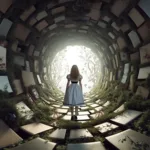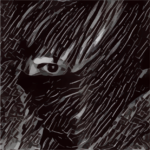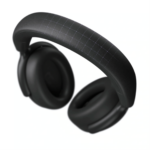Explorations in sustainability, material science, and fabricating
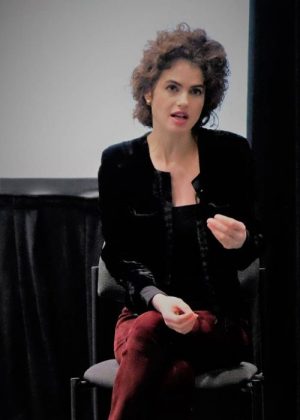
The work of Israeli-American designer and architect Neri Oxman lives at the place where art, engineering, and nature come together. It’s just being explored as older ideas about engineering improving on nature give way to ideas about how much nature teaches us about engineering. Art, as it turns out is a natural by-product. Oxman was the guest speaker at Solidworks World 2018.
While there was a huge focus this year at Solidworks World on making, additive manufacture and the lovely efficient forms created by generative design, Oxman took the discussion to the next logical level—bio-organic making. Her study at MIT is built around the idea of growing products as opposed to assembling them. In the same way that nature can adapt to changing environmental conditions, perhaps products can also adapt, to continue their usefulness or conversely, to gracefully degrade.
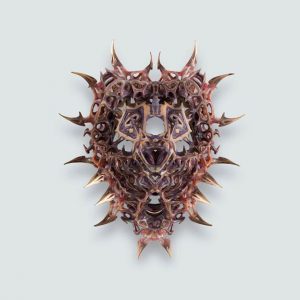
Her Vespers series is a case in point. Revisiting the idea of ancient death masks, Oxman and her colleagues in the Mediated Matter group: Christoph Bader, Dominik Kolb, Rachel Smith, and Sunanda Sharma have been working with Stratasys on a series of 15 masks representing the past, present, and future. The group has also worked with other artists including Zaha Hadid, Nick Ervinck, and Daniel Widrig to explore ancient materials, forms, and colors. Those masks are intricate, wild, and primitive, like artifacts returned to us from the past.
The five masks of the present are expressions of the point between life and death. Those are constructed with an intricate interior to suggest complex natural forms and an exterior that speaks to culture, design, and fabrication. The exterior we have developed that hides our inner workings.
According to an article written by Elizabeth Stinson in Wired, “Oxman’s team modeled the delicate resin shapes after eddies of exhaled air—a sculptural representation of the eventual wearer’s dying expiration.” The team worked with fluid dynamics programs to create the internal forms.
Finally, the five masks of the Future hold the promise of rebirth as well as well os remembrance. They are smooth, almost featureless and include micro-organisms captured in the internal channels of the 3D printed masks, to include the promise of future life.
The Vespers project is probably Oxman’s best known work. It has been enthusiastically backed by Stratasys throughout its conception and has been shown at Paris’ large exhibition of art created through additive manufacture at the Pompidou center in 2017 and at the London Design Museum in 2016. As for Stratasys, Oxman has taken advantage of the company’s multi-jet multi-material technology. Stratasys has also been deeply involved in organic printing and medical devices. Obviously, it’s been a good collaboration for both sides.
Oxman has also collaborated with another type of additive manufacture, silkworms.
Growing architecture, spinning webs
Additive manufacture works in way similar to nature, laying down layers of material according to genetically programmed code as bees create honeycombs, or extruding a thread to build shapes like a silkworm cocoon, or a spider’s web. The Mediated Matter team has sought to adapt these methods to create new forms and for architecture. For instance, the team has created a silk pavilion by encouraging silk worms to work along a template made of silk fibers. They have also used bio-materials to build a dome using additive manufacture techniques, the idea being that the structure can be used as a shelter and it will bio-degrade with time. In this a lot of work David Benjamin has been doing with his architectural group, The Living, which was acquired by Autodesk in 2014.
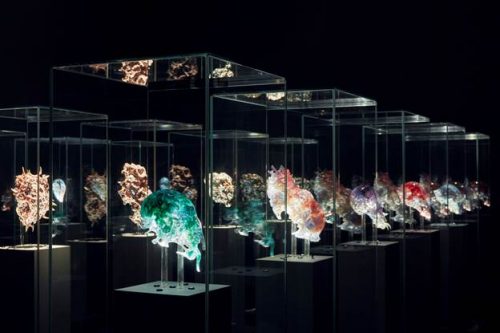
The team is also experimenting with molten glass as a material for additive manufacture, enabling the use of glass architecturally to harness sunlight. Likewise they have created a lovely translucent material using shrimp shells. The Turing test of material ecology says Oxman is to offer someone a natural product and see if they could tell it’s natural. The idea is to do away with harmful materials like plastics and replace them with natural materials.
Likewise, she says, she sees an evolution in design towards computational design instead of computer aided design. Computer aided design means you have a design already and the computer enables you to realize that design. Computational design can take advantage of AI, generative modeling, and intelligent techniques to create designs that are aware and can adapt. The idea is to bring nature and technology together harmoniously. Oddly, Oxman is cautious about manipulating nature. She’s not so sure about hacking DNA, but rather like coaxing silkworms to do something they do naturally, she wants to template with natural resources.
What do we think?
This is exactly the kind of work we founded GraphicSpeak to find and share. Science and engineering is and needs to be beautiful and elegant. As the old adage goes I might not know much about art, but I know what I like. Well, I might not know much about engineering, but I can appreciate good engineering by looking at it. Art and engineering and science and math and technology should never have been separated in education or in our appreciation of good work, and beautiful science.
Neri Oxman’s Ted Talk
The Silk Pavilion: https://www.media.mit.edu/projects/silk-pavilion/overview/
A list of Oxman’s shows wordwide: http://www.materialecology.com/exhibitions

